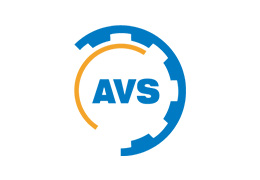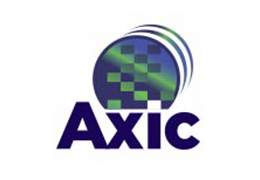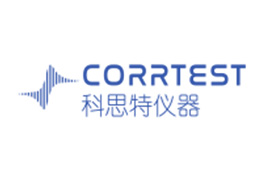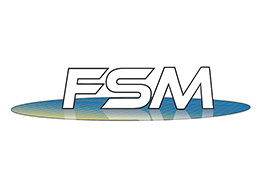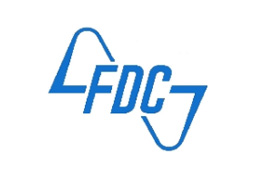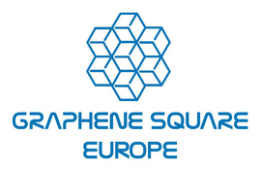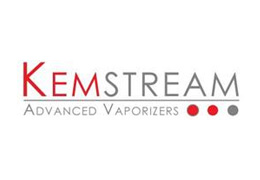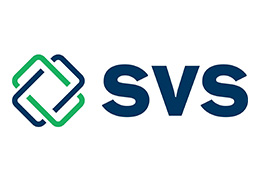Product Introduction
CS350 potentiostat/galvanostat with built-in EIS is the most advanced and comprehensive model among single channel models. It contains a fast digital function generator, high-speed data acquisition circuitry, a potentiostat and a galvanostat. It has more than 40 electrochemical methods including built-in EIS (frequency range 10μHz~1MHz). Max. current is ±2A, potential range is ±10V. It can be used for high current systems such as corrosion, the hot CO2 reduction, and low current measurements as well. It supports 2-,3-,4-electrode system, and can run under floating or grounded mode.

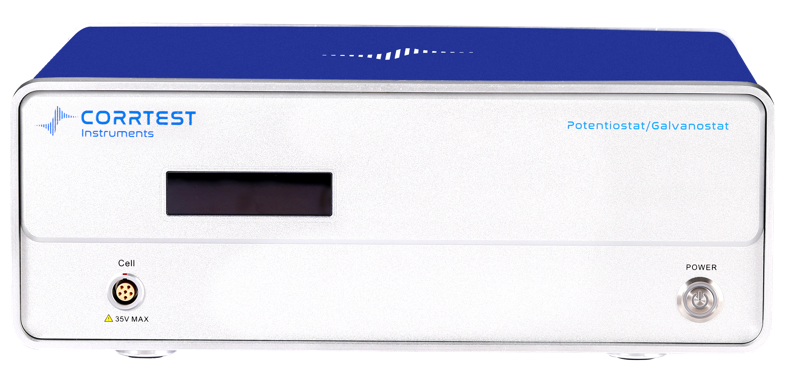
-1(1).png) Application
Application
● Reaction mechanism of Electrosynthesis, electrodeposition, anodic oxidation, etc.
● Electrochemical analysis and sensor;
● New energy materials (Li-ion battery, solar cell, fuel cell, supercapacitors), advanced functional materials, photoelectronic materials;
● Corrosion study of metals in water, concrete and soil, etc;
● Fast evaluation of corrosion inhibitor, water stabilizer, coating and cathodic protection efficiency. Standard supply list for each set
Instrument host CS350 x1
CS studio software x1
Power cable x1
USB cable x1
Cell cable x2
Dummy cell(1kΩ||100µF) x1
Manual x1 Service: (**all the service is free)
1. Warranty period: 5 years
2. Provide installation guidance and manual, software installation video.
3. Lifetime free software upgrading and technical service
4. Provide repair service for free Technical advantages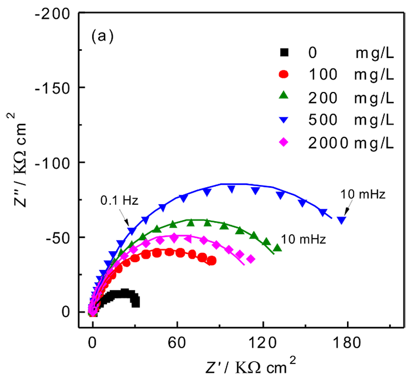
Tafel plot can be obtained. The user can set the anodic reversal current (passivation film breakdown current) of the cyclic polarization curve to obtain material’s pitting potential and protection potential and uate the its susceptibility to intergranular corrosion. The software uses non-linear fitting to analyze polarization curve, and can make fast evaluation of material’s anti-corrosion ability and inhibitors..png)
Polarization curve of Ti-based amorphous alloy & stainless steel in 3%NaCl solution
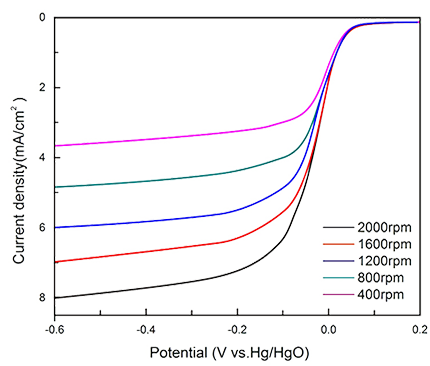
.jpg)
LSV: mesoporous carbon material in 0.1M KOH CV of PPy supercapacitor in 0.5 mol/L H2SO4
CS studio software provides users a versatile smoothing/differential/ integration kit, which can complete the calculation of peak height, peak area and peak potential of CV curves. In CV technique, during the data analysis, there is function of selecting exact cycle(s) to show. You can choose to see a cycle or some cycles as you want. You can also export data or vector graph of an exact cycle or several cycles..png) Tafel plot and corrosion rate:
Tafel plot and corrosion rate:
CS studio also provides powerful non-linear fitting on Butler-Volmer equation of polarization curve. It can calculate Tafel slope, corrosion current density, limitation current, polarization resistance, corrosion rate. It can also calculate the power spectrum density, noise resistance and noise spectrum resistance based on the electrochemical noise measurements.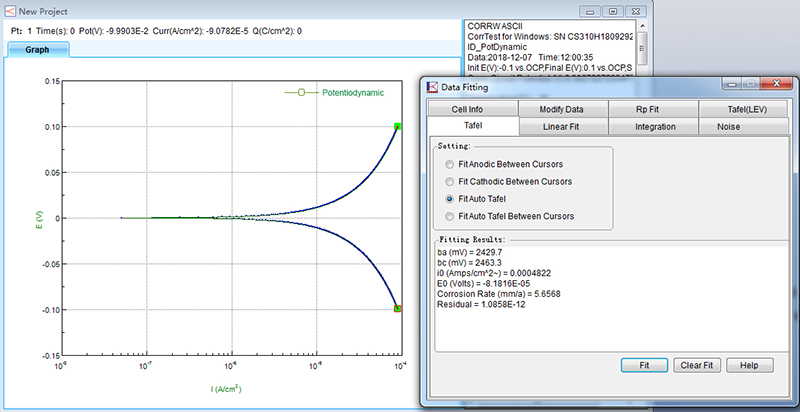 Battery Test and analysis:
Battery Test and analysis:
charge & discharge efficiency, capacity, specific capacitance, charge & discharge energy.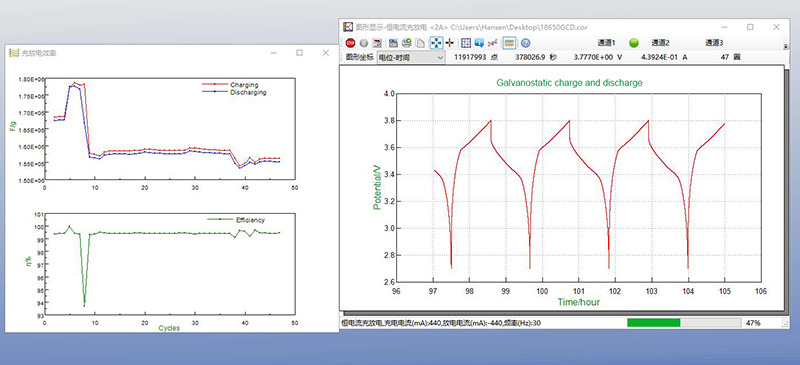 EIS analysis: Bode, Nyquist, Mott-Schottky plot
EIS analysis: Bode, Nyquist, Mott-Schottky plot
During EIS data analysis, there is built-in fitting function to draw the custom equivalent circuit.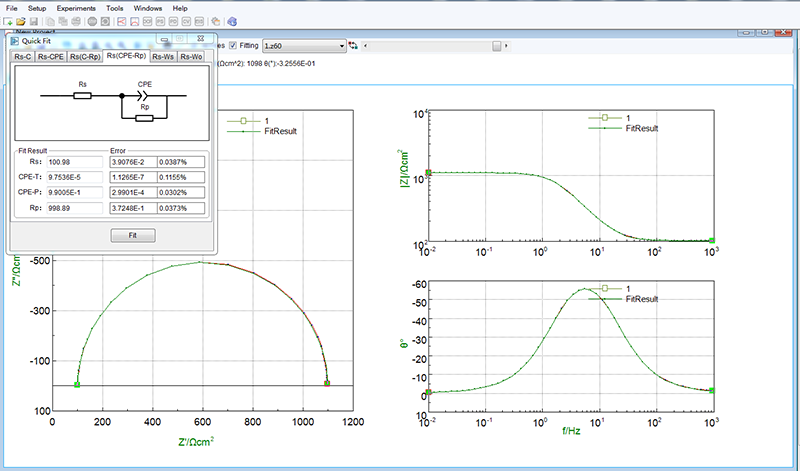 Real time saving of data: The data can be automatically saved even in case of sudden power off.
Combination test: it can facilitate the automation of experiments and save time. With the unique function of combination test, you can choose several techniques, and set the wait time, the start time, and the cycles. Choose the experiments you want to run. Then you can make auto measurement of the set experiments as you want without having to wait in the lab. This function is especially useful if you have multi experiments to run and save your time greatly.
Real time saving of data: The data can be automatically saved even in case of sudden power off.
Combination test: it can facilitate the automation of experiments and save time. With the unique function of combination test, you can choose several techniques, and set the wait time, the start time, and the cycles. Choose the experiments you want to run. Then you can make auto measurement of the set experiments as you want without having to wait in the lab. This function is especially useful if you have multi experiments to run and save your time greatly.
 Data open: You can open the data files by txt format in notepad. Data can also be opened in Origin
Data open: You can open the data files by txt format in notepad. Data can also be opened in Origin
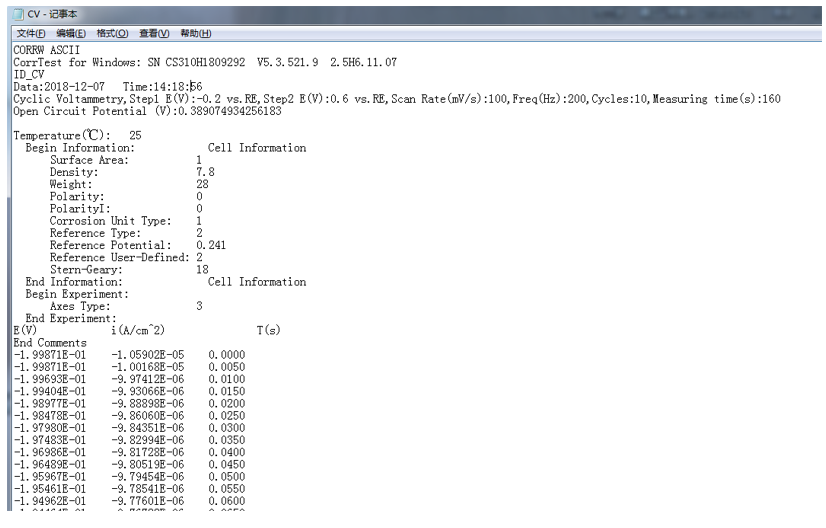


-1(1).png) Application
Application● Reaction mechanism of Electrosynthesis, electrodeposition, anodic oxidation, etc.
● Electrochemical analysis and sensor;
● New energy materials (Li-ion battery, solar cell, fuel cell, supercapacitors), advanced functional materials, photoelectronic materials;
● Corrosion study of metals in water, concrete and soil, etc;
● Fast evaluation of corrosion inhibitor, water stabilizer, coating and cathodic protection efficiency. Standard supply list for each set
Instrument host CS350 x1
CS studio software x1
Power cable x1
USB cable x1
Cell cable x2
Dummy cell(1kΩ||100µF) x1
Manual x1 Service: (**all the service is free)
1. Warranty period: 5 years
2. Provide installation guidance and manual, software installation video.
3. Lifetime free software upgrading and technical service
4. Provide repair service for free Technical advantages
1. Impedance (EIS)
CS350 potentiostat applies correlation integral algorithm and dual-channel over-sampling technique, and has strong anti-interference ability. It is suitable for EIS measurements of high-impedance system (>109Ω, such as coating, concrete etc.).

EIS of AA6063 Al alloy in Ce3+ containing 3% NaCl solution
2. Polarization curveTafel plot can be obtained. The user can set the anodic reversal current (passivation film breakdown current) of the cyclic polarization curve to obtain material’s pitting potential and protection potential and uate the its susceptibility to intergranular corrosion. The software uses non-linear fitting to analyze polarization curve, and can make fast evaluation of material’s anti-corrosion ability and inhibitors.
.png)
Polarization curve of Ti-based amorphous alloy & stainless steel in 3%NaCl solution
3. Voltammetry
Linear Sweep Voltammetry(LSV), Cyclic Voltammetry(CV), SCV, SWV, DPV, NPV,ACV, Stripping voltammetry etc. It integrates calculation of peak area, peak current and standard curve analysis.

.jpg)
LSV: mesoporous carbon material in 0.1M KOH CV of PPy supercapacitor in 0.5 mol/L H2SO4
4. Electrochemical Noise
With high-resistance follower and zero-resistance ammeter, it measures the natural potential/current fluctuations in corrosion system. It can be used to study pitting corrosion, galvanic corrosion, crevice corrosion, and stress corrosion cracking etc. Based on calculation of noise resistance and pitting index, it can complete localized corrosion monitoring.

5. Full floating measurement
Full-floating mode be used for autoclave electrochemical measurements, on-line corrosion monitoring of metallic components under the ground (rebar in concrete, etc.)
6. Software development kit (SDK)
We are able to provide API functions and development examples, which facilitates some users’ requirements for secondary development and self-defined measurements. We can provide .dll file.
Software Features Cyclic voltammetry:CS studio software provides users a versatile smoothing/differential/ integration kit, which can complete the calculation of peak height, peak area and peak potential of CV curves. In CV technique, during the data analysis, there is function of selecting exact cycle(s) to show. You can choose to see a cycle or some cycles as you want. You can also export data or vector graph of an exact cycle or several cycles.
.png)
CS studio also provides powerful non-linear fitting on Butler-Volmer equation of polarization curve. It can calculate Tafel slope, corrosion current density, limitation current, polarization resistance, corrosion rate. It can also calculate the power spectrum density, noise resistance and noise spectrum resistance based on the electrochemical noise measurements.

charge & discharge efficiency, capacity, specific capacitance, charge & discharge energy.

During EIS data analysis, there is built-in fitting function to draw the custom equivalent circuit.



Specifications
| Specifications | |
| Support 2-, 3- or 4-electrode system | Potential and current range: Automatic |
| Potential control range: ±10V | Current control range: ±2A |
| Potential control accuracy: 0.1%×full range±1mV | Current control accuracy: 0.1%×full range |
| Potential resolution: 10μV (>100Hz),3μV (<10Hz) | Current sensitivity:1pA |
| Rise time: <1μS (<10mA), <10μS (<2A) | Reference electrode input impedance:1012Ω||20pF |
| Current range: 2nA~2A, 10 ranges | Compliance voltage: ±21V |
| Maximum current output: 2A | CV and LSV scan rate: 0.001mV~10,000V/s |
| CA and CC pulse width: 0.0001~65,000s | Current increment during scan: 1mA@1A/ms> |
| Potential increment during scan: 0.076mV@1V/ms> | SWV frequency: 0.001~100 kHz |
| DPV and NPV pulse width: 0.0001~1000s | AD data acquisition:16bit@1 MHz,20bit@1 kHz |
| DA Resolution:16bit, setup time:1μs | Minimum potential increment in CV: 0.075mV |
| IMP frequency: 10μHz~1MHz | Low-pass filters: covering 8-decade |
| Operating System: Windows 7/8/10/11 | Interface: USB 2.0 |
| Weight / Measurements: 6.5kg, 36.5 x 30.5 x16 cm | |
| EIS (Electrochemical Impedance Spectroscopy) | |
| Signal generator | |
| Frequency range:10μHz~1MHz | AC amplitude: 0.1mV~2500mV |
| DC Bias: -10~+10V | Output impedance: 50Ω |
| Waveform: sine wave, triangular wave and square wave | Wave distortion: <1% |
| Scanning mode: logarithmic/linear, increase/decrease | |
| Signal analyzer | |
| Integral time: minimum:10ms or the longest time of a cycle | Maximum:106 cycles or 105s |
| Measurement delay: 0~105s | |
| DC offset compensation | |
| Potential automatic compensation range: -10V~+10V | Current compensation range: -1A~+1A |
| Bandwidth: 8-decade frequency range, automatic and manual setting | |
Techniques
Techniques /Software of Model CS350Stable polarization
- Open Circuit Potential (OCP)
- Potentiostatic (I-T curve)
- Galvanostatic
- Potentiodynamic (Tafel plot)
- Galvanodynamic (DGP)
- Multi Potential Steps
- Multi Current Steps
- Potential Stair-Step (VSTEP)
- Galvanic Stair-Step (ISTEP)
- Chronopotentiometry (CP)
- Chronoamperametry (CA)
- Chronocaulometry (CC)
- Linear Sweep Voltammetry (LSV)
- Cylic Voltammetry (CV)
- Staircase Voltammetry (SCV)
- Square Wave Voltammetry (SWV)
- Differential Pulse Voltammetry (DPV)
- Normal Pulse Voltammetry (NPV)#
- Differential Normal Pulse Voltammetry (DNPV)
- AC Voltammetry (ACV)
- 2nd harmonic AC Voltammetry (SHACV)
- Fourier Transform AC Voltammetry (FTACV)
- Differential Pulse Amperometry (DPA)
- Double Differential Pulse Amperometry (DDPA)
- Triple Pulse Amperometry (TPA)
- Integrated Pulse Amperometric Detection (IPAD)
- Potentiostatic Stripping
- Linear Stripping
- Staircase Stripping
- Square Wave Stripping
- Differential Pulse Voltammetry Stripping
- Normal Pulse Voltammetry Stripping
- Differential Normal Pulse Voltammetry Stripping
- EIS vs Frequency (IMP)
- EIS vs Time (IMPT)
- EIS vs Potential (IMPE)(Mott-Schottky)
- Cyclic polarization curve (CPP)
- Linear polarization curve (LPR)
- Electrochemical Potentiokinetic Reactivation (EPR)
- Electrochemical Noise (EN)
- Zero resistance Ammeter (ZRA)
- Battery Charge and Discharge
- Galvanostatic Charge and Discharge (GCD)
- Potentiostatic Charging and Discharging(PCD)
- Potentiostatic Intermittent Titration Technique(PITT)
- Galvanostatic Intermittent Titration Technique(GITT)
- Data Logger
- Electrochemical Stripping/ Deposition
- Bulk Eletrolysis with Coulometry (BE)
- Rs measurement



